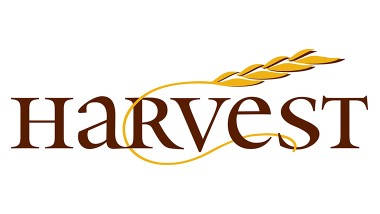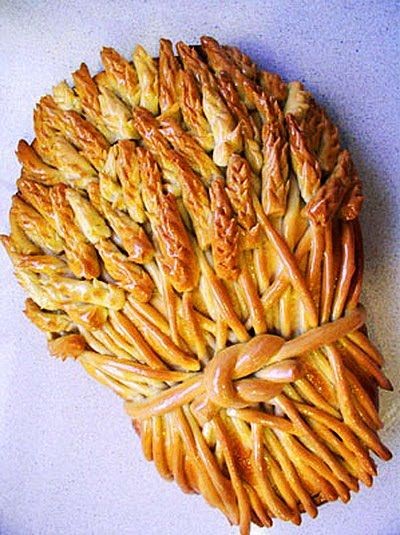
Sermon: September 24 2017
Readings: Leviticus 23: 15-22; John 4: 4-14; Psalm 104: 14-15
Introduction
Although we trace the roots of the Harvest Festival to the book of Leviticus, the Harvest Festival as we know it today is relatively recent.
Following Henry VIII’ split from the Catholic Church in the 1530s, the tradition of celebrating Harvest in the English church went into abeyance until the nineteenth century. Church historians have traced the revival to 1843 when Rev Robert Hawker (Vicar of Morwenstow in Cornwall) invited parishioners in his rural parish to a special service of thanksgiving for the Harvest. It proved to be a great success and was quickly adopted by many churches. Interestingly, the composition of hymns such as “Come, ye thankful people come” (1844); “All things bright and beautiful” (1848) and “We plough the fields and scatter” (1861) around this time, helped to popularise this service which connected with the nation that was moving rapidly from being an agricultural to an industrial economy.
Ice Breaker
In our modern and increasingly urban world, do you think that giving thanks to God for the Harvest is archaic and out of place in the life of church today?
Share your thoughts together.
Questions (see Helpful Hints)
Read Leviticus 23: 15-22
1. How can we discern the roots of the Harvest Thanksgiving service in the Festival of Weeks?
2. (verse 17) Why do you think God instructed His people to “ ..bring two loaves….as a wave offering of first fruits to the Lord”?
3. Is there a reason why the numbers 7 and 50 and 1 male goat are specifically given?
4. At Harvest, it is customary to display a special loaf of bread in church as a centrepiece for our worship.
a) Do you know what this loaf of bread is called?
b) What it is thought to signify and
c) how it was used within the worship of the church?
6. (verse 22) This was a radical instruction at the time.
a) In your opinion, why did God give this instruction?
b) How might this link to the convention for churches to support others in need through practical ways at Harvest?
(Note: this year, gifts of food will be given to continue our support of the Epsom and Ewell Food Bank (see https://epsomewell.foodbank.org.uk )
7. Read John 4: 4-14. In what way does our support of WaterAid (https://www.wateraid.org/uk/why-wateraid) at harvest this year, connect with Jesus’ encounter with the Samaritan woman at the well?
Conclusion
Consider sharing how your understanding of Harvest Thanksgiving may have changed and how you wish to honour the Lord at Harvest,
Conclude by praying for the ministry of the Epsom and Ewell Food bank and WaterAid.
HELPFUL HINTS
1. The Festival of Weeks (“Shavuot” in Hebrew) is one of the three festivals that God instructed His people to honour in thanksgiving for His provision. ‘Shavuot’ is honoured 50 days after Passover (’Pesach’) and before the Feast of the Tabernacles (‘Sukkot’). All three festivals involved a pilgrimage to worship at the Temple in Jerusalem (building community) and the offering of first fruits in thanksgiving for God’s provision for the physical needs of His people.
“Passover” in early spring, included first fruits from the first harvest -barley.
“Shavuot”, in late spring, included first fruits from the wheat harvest. Among the many offerings given, was a “wave offering” of two loaves of leavened bread. This was the first fruits offering. “Sukkot”, (Feast of the Tabernacles) in autumn, was the final harvest and included first fruits of olives and grapes. This festival focuses on remembering God’s faithfulness to His people as they journeyed on their journey from slavery to freedom in the Promised Land (the Exodus). In remembrance of this, to this day, observant Jewish people build and live in a tent (tabernacle) in their homes Returning to “Shavuot” (Festival of the Weeks):
According to Jewish tradition, during Shavuot, Moses received the Law from God at Mount Sinai and King David is believed have been born and died on Shavuot. Interestingly, the book of Ruth begins at the time of Harvest. This connects with the themes of Harvest - God’s faithful and generous provision, community, redemption. The book of Ruth connects with King David (as the last verse of the book of Ruth names David as one of her descendants).
2. It is suggested that the loaves:
a) represent humanity (one loaf is the Jewish people, the other Gentiles) or
b) the two tablets of the 10 Commandments that Moses brought down from Mount Sinai
Note: As you will have read, the loaves are part of the offering given to God.
3. In scripture:
a) the number seven is understood to mean that something is complete, finished (e.g. God created the universe in 6 days and rested on the seventh day). From Genesis 1 onwards, this association continues, as seven is often found in contexts involving completeness or divine perfection. For example, the command for animals to be at least seven days old before being used for sacrifice (Exodus 22:30)), the command for leprous Naaman to bathe in the Jordan River seven times to effect complete cleansing (2 Kings 5:10) and the command for Joshua to march around Jericho for seven days (and on the seventh day to make seven circuits) and for seven priests blow seven trumpets outside the city walls (Joshua 6:3–4). In these instances, the number seven signifies the completion of a divine mandate.
Series of seven things occur frequently Bible. For example, seven pairs of each clean animal on the ark (Genesis 7:2); seven stems on the tabernacle’s lampstand (Exodus 25:37); seven qualities of the Messiah in Isaiah 11:2; seven signs in John’s Gospel; seven things the Lord hates in Proverbs 6:16; seven parables in Matthew 13; and seven woes in Matthew 23.Multiples of seven also appear the biblical narrative: the “seventy weeks” prophecy in Daniel 9:24 concerns 490 years (7 times 7 times 10). Jeremiah 29:10 predicted the Babylonian Captivity would last for seventy years (7 times 10). According to Leviticus 25:8, the Year of Jubilee was to begin after the passing of every forty-ninth year (7 times 7).
Sometimes, the symbolism of seven is a great comfort to us e.g. Jesus is the seven-fold “I AM” in the Gospel of John. On other occasions, it challenges e.g. Jesus told Peter to forgive a wrongdoer “seventy times seven” times (Matthew 18:22, NKJV). And then there are passages in which the number seven is associated with God’s judgment e.g. the seven bowls of the Great Tribulation (Revelation 16:1), or God’s warning to Israel in Leviticus 26:18.
b)The number fifty is commonly accepted to mean the “freedom” that God gives (e.g. Jubilee in Leviticus 25: 8-17; Pentecost in Acts 2) and is frequently associated with the Holy Spirit. The Holy Spirit brings the “first fruits” of the kingdom of God and is the means through which the kingdom of God comes and also the person through whom the fruit of the kingdom grows within a disciple of Christ (see Galatians 5:22-23).
Accordingly, the fact that the Feast of the Weeks (a root of the Harvest Thanksgiving) is celebrated fifty days after Passover (the freedom meal); involves the giving of the “first fruits” of the Harvest and points towards the giving of the Holy Spirit to all believers at Pentecost (Acts 2:1-31) is significant.
c)The sacrifice of “1 male goat for a sin offering” points forward to the sacrifice of Christ in the cross for the sins of the whole world. The sacrifice of “two lambs… as a fellowship offering” also points forward to the sacrifice of Christ on the cross and how through His act of grace, humanity is reconciled to God.
4.The loaf is known as a ‘Lammas’ loaf and has a distinctive pattern – normally as a sheaf of wheat. The name derives from Anglo-Savon and means “loaf mass.”
 The loaf of bread is made from the first fruits of the wheat harvest and was given to the church to be a centrepiece for the Harvest Thanksgiving. The loaf of bread is made from the first fruits of the wheat harvest and was given to the church to be a centrepiece for the Harvest Thanksgiving.
The Lammas loaf was then traditionally used as the bread for the Eucharist (communion) during the service of thanksgiving that followed the ingathering of the Harvest. The Lammas loaf points to Christ who declared that he is “the bread of life” (John 6:35). In this way, the Lammas loaf demonstrates how God meets all the needs (spiritual and physical) of humanity. Following Henry VIII split from Rome in 1533, the Lammas Thanksgiving ceased to be marked in the new church calendar,
The Lammas loaf was also commonly used as part of the communal meal for parishioners that followed the Harvest Festival ion church. In both cases, the Lammas loaf helped to build community as it was shared by all.
The wheat harvest (normally August-September) was known as “Lammastide”. The end of the harvest was marked by a holiday, ‘Lammas Day”, which was marked by a church service and frequently a communal meal.
|